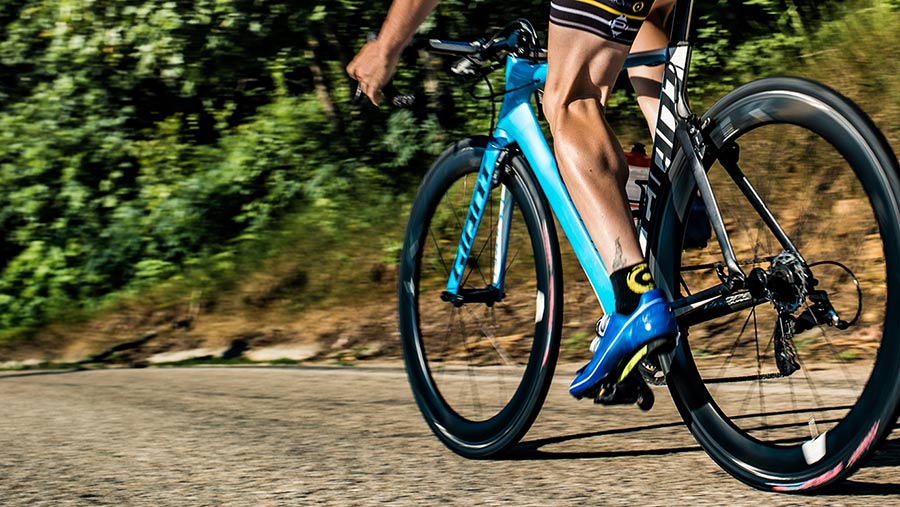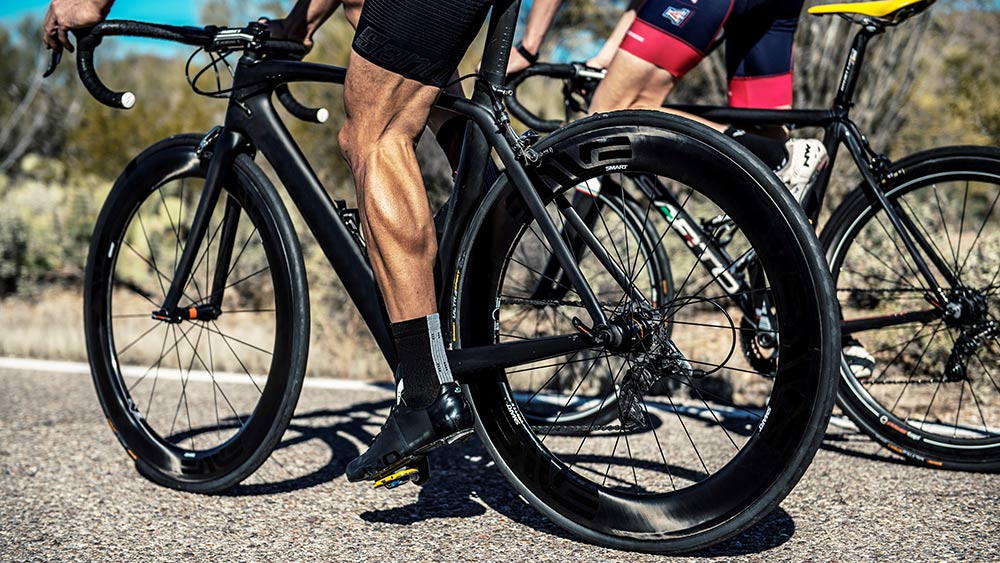By: Jim Rutberg, CTS Pro Coach
If you're on PowerTap's website you are probably already interested in training with power, so I'm not going to spend your time telling you about all the ways a cycling power meter can make your training more effective, time-efficient, and fun. Instead, let's take a look at your choices and help you get the power meter that best fits your riding style and performance goals.
There are a lot of power meters on the market and the first step to making a choice is to make sure any meter you are considering features direct power measurement. Strain gauges are the best way to measure power because you are directly measuring the deflection caused by applying force. Some power meters try to calculate power from indirect data, but when you can use strain gauges there isn't much point in using something less accurate.

You also have to consider both the accuracy and consistency of your data, and understand the difference between them. An accurate power meter measures power within 1.5% of the actual power you are producing, but consistency is ultimately more important than absolute accuracy. Even if your power meter is measuring 2% lower than your actual power, it is important that it measures 2% low today, tomorrow, next week, and next month. Consistency is ultimately more important than absolute accuracy because it enables you to monitor your training and track your progress with confidence.
All PowerTap power meters measure power directly using strain gauges and have been proven to deliver both accurate and consistent data. They all also have user-replaceable batteries and connect to a wide variety of head units.
So let's say you've decided to purchase a PowerTap. You're still not quite done. The next step is choosing to measure power at the hub/wheel, chainring, or pedal. Here are some considerations to help you make your choice:

Accuracy
Didn't I just say all PowerTaps are proven accurate and consistent? Yes, but that doesn't mean they are all the same. Let me explain. Technically, for greatest accuracy you want to measure power as close as possible to the location where the power is being generated.
The greater the distance between generating and measuring power, the more power can potentially be lost. This would indicate that pedal-based cycling power meters are more accurate than crank/chainring meters, which are more accurate than hub-based meters. There are some special instances (research, mostly) where these differences matter. For most athletes, however, any small differences between the three options are inconsequential because consistency is still more important than absolute accuracy.
What the differences between measuring power at the pedal, chainring, and hub do illustrate is that power meters are only accurate to themselves. If you have a hub power meter on one bike and a chainring power meter on another bike, your data from one bike will be similar to but not identical to the data from the other bike.
When coaching athletes who have multiple power meters on different bikes, even when the meters are both hub-based or both chainring-based, we have to be careful when comparing data between different bike/meter set-ups.

Compatibility
Before buying a cycling power meter you have to make sure it's compatible with the rest of your equipment. PowerTap chainrings are designed to fit on a 5-bolt, 110 BCD crank. View compatibility chart. The P1 pedals use a 3-bolt Look-style cleat, so you will need road cycling shoes that are compatible, which the vast majority are. If you are looking to measure power on a mountain bike, you need to go with the PowerTap hub built into a mountain bike wheel.
And any athlete considering a rear wheel or wheelset option needs to check their bike for the following information: axle spacing, disc vs. rim brake, and quick release vs. thru axle. If you use a wheel-off trainer that is not a smart trainer (doesn't contain a power meter in the trainer), you will need to record power using a C1 or P1.

Portability
A lot of athletes train on more than one bike and in an ideal scenario you would train with power on all of them.
On a scale of time and tools required, swapping PowerTap wheels from one bike to another is fast and requires no tools, although you may need to change tires. PowerTap P1 pedals are easy and fast to swap between bikes and will thread into any standard crank. You only need an 8mm Allen wrench to get the job done. The most time-intensive swap is moving the C1 chainring setup from one bike to another. Even so, it is still a simple process involving only 5 chainring bolts.
The table below summarizes the compatibility of PowerTap's hub, chainring, and pedal power meters across a range of bikes.
| Road | TT/Tri | Gravel/Cross | MTB (disc brake) | |
| Hub/Wheel | Frames must have same spacing and brake type. Depending on the hub, you may be able to switch between quick release and thru-axle. | Typically a hub built into a MTB-specific wheel. | ||
| Chainring | Cranks must be 5-bolt, 110bcd | Not compatible | ||
| Pedal | Compatible | Technically compatible, but not recommended due to road-style cleat and shoes | ||
From a practical standpoint, I would make the following recommendations. If you only ride in road shoes and/or travel frequently, P1 pedals are the easiest and quickest option as you can pop them onto a rental road bike or even a hotel exercise bike on a business trip.
If cyclocross and/or gravel are a big part of your life, a C1 chainring is a great option because you can use it with either road or MTB shoes, and with a variety of wheels.
And PowerTap wheel options are great if your bikes have a variety of crank bolt patterns (4-bolt/110bcd, 5-bolt/130bcd, etc.), you want to use different chainring sizes on different bikes, or you want to build up a really slick set of carbon wheels for training and racing!

Durability
No product lasts forever, but PowerTap power meters have a great track record for durability. Even so, it is good to at least think about long-term wear and tear before making a purchase.
Hubs with cartridge bearings are pretty much bullet-proof when it comes to wear. You'll have to change batteries and eventually replace the bearings, but the rim will give out well before the hub does.
On the C1 you will eventually have wear on the chainrings themselves, especially if you are not good about keeping your drivetrain clean and replacing your chain with reasonable frequency. Fortunately, the chainrings are replaceable at a fraction of the cost of a new power meter.
P1 pedals are also extremely durable. The only thing to keep in mind is that, of the three options, the pedals are most susceptible to impact damage if you crash or smack your inside pedal into the road while pedaling through a turn.

The Big Picture
A cycling power meter is a long-term investment in your progress as an athlete. There will always be a cheaper option, but in the long run athletes are best served by shopping on value over price. After 15+ years of training athletes with power, the value you are paying for is the years of testing, product refinement, and quality control.
And don't underestimate the value of buying from an established company with the customer service and production infrastructure to be responsive to customers' needs. If you bought a car from a company that just started making cars and the car frequently needed repair from an understaffed and inexperienced service department, you'd get frustrated pretty quickly. If you just want to use your power meter instead of futzing with it, buy a PowerTap.

Jim Rutberg is a Pro Coach with CTS and the co-author of 8 books on training and sports nutrition, including “The Time-Crunched Cyclist”. He is also a 10-time finisher of the Leadville 100 and 2-time finisher of the Dirty Kanza 200 gravel race.
For more information on personal coaching, training camps, and CTS Bucket List events, visit www.trainright.com.
